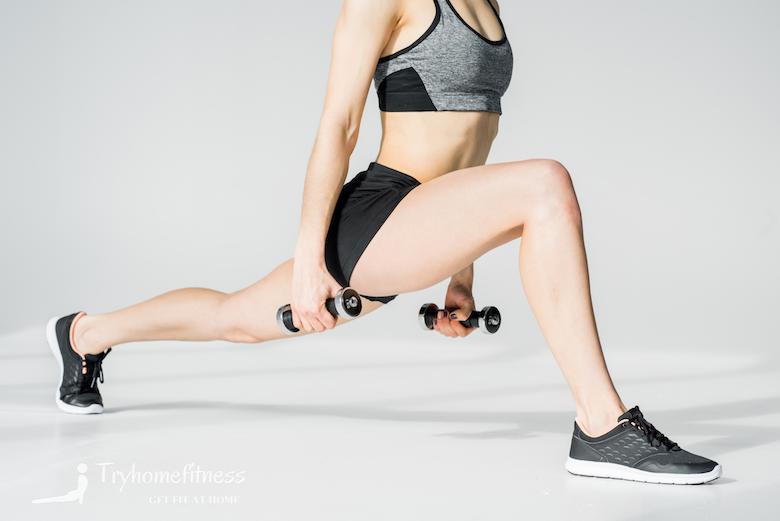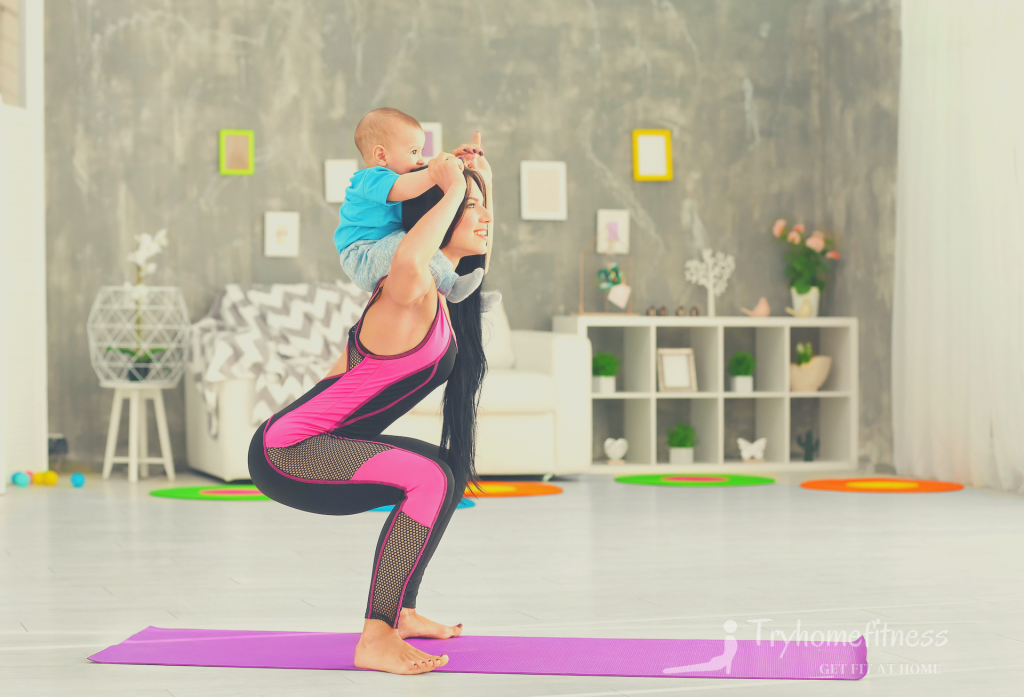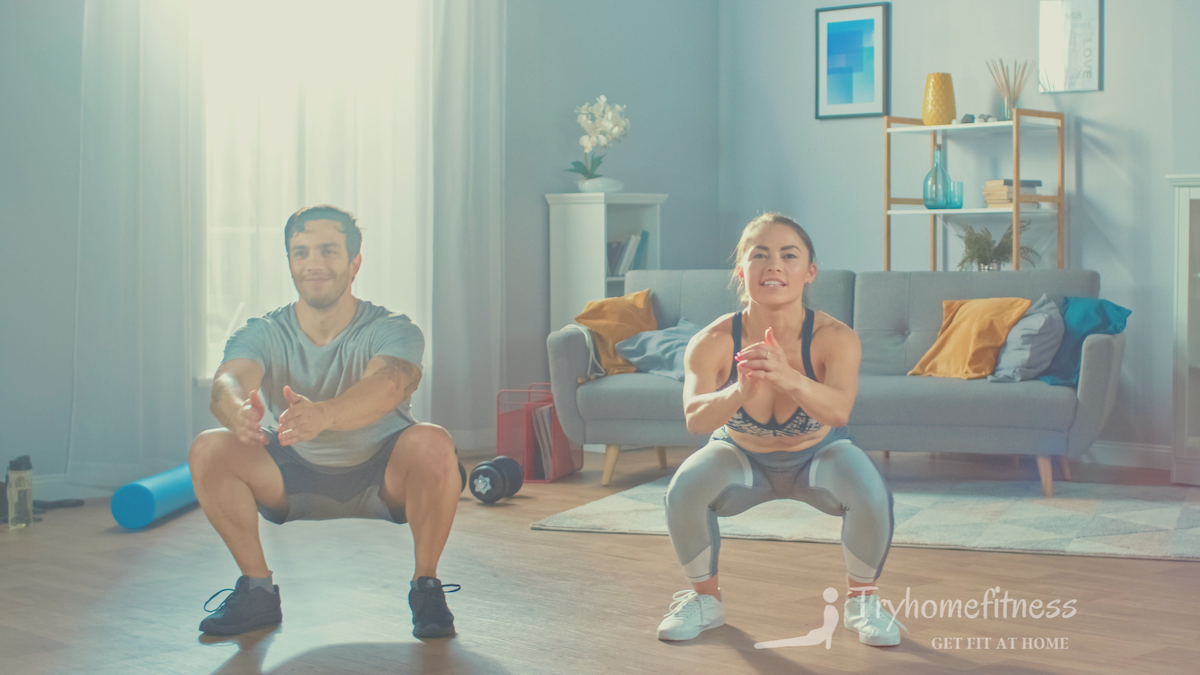Tight clothes? No way! I used to hate the sight of myself in anything with a snug fit, with my unexciting butt and flabby thighs.
I knew that unless I sorted it out, I wouldn’t be wearing my favorite swimwear on my beach vacation. They needed trimming up to give me the confidence I needed.
Squats were the answer.
Hopefully, you’ll be excited to add them into your life too after reading about the benefits of squats. But don’t forget to get hold of the best squat-proof leggings to avoid any embarrassment if you’re going to be amongst other people.
Contents
What Are Squats?
A squat is a body exercise, focusing on the buttocks and legs. By bending at the knees, and keeping a straight back, you lower yourself down into a virtual sitting position. You then stand and repeat the process.
One of the benefits of squats is that they are so diverse. They can be adjusted into jump squats to provide fat-burning cardio workouts or add weights for increased intensity and loads more.
Benefits of Squats
The benefits of squats are incredible, for both sexes. Time to jump in…
Improve Your Posture
By strengthening the muscles surrounding your spine (erector spinae), a squat can help to lift your back into a better postural position. This improves movement and support for the spine while decreasing the chance of back pain.
Build Muscle
Another benefit of squats is that they work the four primary muscle groups of the lower body. Breaking down these muscle tissues through compound exercises helps them to rebuild stronger.
Burn Calories
Doing squats as a form of exercise workout increases your BMR (basal metabolic rate), the number of calories your organs need to function without doing any exercise. So even at rest, you’ll be burning fat.
Additionally, as you train, the number of calories you use increases. If caloric expenditure surpasses your calorie intake you have a better chance of losing weight!
Improve Flexibility
Your quadriceps and hamstrings are your primary area of movement during a squat. By stretching these muscles as you lower down, you’re preventing them from becoming stiff, especially in later life.
Mobility and Balance
As you squat, you’re working one of the body’s most crucial joints: the knees.
The human body is designed to move freely and without pain. If that’s not happening, you may need to look into mobility routines that maintain the proper function of joints. These involve compound movements such as squats.
Strengthen Your Cardiovascular System
When you raise your heart rate during exercise, your cardiovascular system has to work harder and become stronger to keep up with your body’s demands.
Increase Bone Density
Bone density decreases in postmenopausal women as well as in those who have osteoporosis.
Another of the benefits of squats is that they increase bone strength.
Functional Movement
Squats strengthen key muscle groups, so you can expect tasks such as picking up your kids or moving furniture to be a lot easier with strong legs, a powerful core and a supportive back. The benefits of squats include aiding day-to-day living.
Squats Don’t Require a Gym Membership
As you perform squats with or without equipment, you don’t require any kind of time in a commercial training facility.
Benefits for Men
While squats are universal, there are a few benefits that men may appreciate more than the average woman.
Building Muscle Size
With adequate protein intake and squatting with weights, it’s a simple way to boost muscle mass.
Hormones
Heavy resistance training, such as weighted squats, is known to boost testosterone and growth hormone in men. The growth hormone can elevate by an average of 44%, as shown in this study.
Benefits for Women



Let’s take a look at some dedicated benefits of squats for women.
Say Goodbye to Cellulite
Cellulite is the term for fat deposits under the surface of the skin and isn’t an indicator of being overweight.
However, many women dislike the dimpled appearance it gives the thighs and buttocks (although it’s absolutely normal!). Exercise, including squatting, can reduce its appearance.
Perk up Your Posterior Chain
Fitness trainers refer to the hamstrings, gluteus maximus, posterior deltoids, erector spinae and trapezius as your posterior chain.
Strong and toned hamstrings and glutes help to make your bum appear perkier. So, get to your squats.
Muscles That Squats Target
The number of muscles worked during a single squat is immense. One of the benefits of squats is that they utilize the quadriceps, hamstrings, abdominals and spinal muscles. All in one go!
On top of this, all types of squats work the outer thighs. Slimming them down and working towards that hourglass figure.
Do Squats Make Your Bum Bigger?
Dependent on your fitness goals, the benefits of squats can work for your butt.
The stance you take when performing squats determines the body part you work most. Stepping your feet further apart into a wide squat pushes your glutes more than a narrow stance squat.
The result could well be not just a bigger bum but also a shaped and toned underbutt.
The key muscles that require enhancing and strengthening for a larger behind are your gluteus maximus and the hamstrings. Glutes define the shape, while hamstrings act as a shelf for your glutes. Squats intensely work both.
Squats for Buttocks
As previously mentioned, standing in a wide stance with your feet turned out works the outsides of the butt muscles.
Try performing three rounds of 20 wide stance squats. Take one minute of rest in between each round.
How to Do Squats Properly for a Bigger Bum
To really increase the size of your glute muscles, you will need to use some kind of resistance in addition to your body weight.
It’s a smart idea to add weights to your workout in the form of dumbbells, kettlebells or even homemade weights such as a heavy rucksack or a large water bottle.
How to Do Squat Exercise at Home



Here are my top three tips for squatting at home:
- Choose a quiet place away from other family members or incorporate them to add some fun.
- Ideally, use an exercise mat.
- Select an area of around one foot square on the wall to concentrate on, to ensure you’re looking forward at all times.
How to Do Squats Properly
Although you need no equipment to do squats properly there are machines available that can help with form and safety. We have written a guide and some reviews of squat racks here.
However, let’s start with the basics of squats without a power cage, squat racks and Smith machine:
Proper Squat Form
- Stand upright, feet shoulder-width apart and your toes pointed outwards.
- Your heels should be the focal point, pushing into the ground rather than your toes, as this “switches on” your glute muscles.
- Extend your arms forward, parallel to your body.
- Pushing backward with your hips, slowly bend your knees.
- Breathe in as you lower down into the squat. Remember not to let your knees pass your toes in front of you.
- Stop when you are in a sitting position, your butt shouldn’t drop below your knees.
- When you’ve reached this stance, hold for a few seconds and slowly rise again, breathing out.
- As you stand back up, squeeze/tense your glutes as you straighten your legs.
Without Weights
Look at this video of the perfect squat without weights.
With Weights
To build muscle or go for a serious booty, use a dumbbell. Pick a suitable weight that you can do about 10 squats with (it should be moderately challenging). Hold it securely with both hands close to your chest.
Perform your squat as above.
Repeat this for three sets of 10, taking 30 seconds to one-minute breaks in between.
With Barbell
One of the benefits of squats with a bar is that it evenly disperses the weight over both sides of your body. This is ideal for those who feel they’re leaning to one side when using a single dumbbell.
You should place the barbell across your shoulders, with your hands holding the bar in a wide grip, palms facing forwards.
Start with just the bar for resistance. If it’s too easy, add weights.
Here’s a demo:
Squat Thrust
An exercise that’s excellent for cardio health – I hate them but that’s probably a good sign.
Lower yourself into a squat. Lean forward slightly, and place your palms flat on the floor, arms locked.
From here, in one movement, thrust your feet and legs behind you so that you are in an upright push-up position. Then, again in a single motion, spring your knees back into the squat.
Stand up straight, and repeat.
Squat Jumps
Jump squats are a popular exercise in High-Intensity Interval Training (HIIT).
You perform them the same as a squat, yet you jump vertically when you reach the upright point.
It’s like a coiled spring-like movement. As you land, lower straight back into the squatting position again and repeat your explosion upwards.
HIIT decreases your body’s recovery time and increases aerobic and anaerobic performance.
Box Squats
By placing a box behind you before squatting, you create a set level to lower your bum onto. In doing so, you’re guaranteed to notice your improvements as you become stronger.
Start with a large box just under half your height. As you get more comfortable over time, gradually decrease the size of the box you use.
The closer you can get to the ground, the better, as long as you don’t suffer from knee issues.
Overhead
Overhead squats are excellent for mobility and stability due to their range of motion.
Take a moderately weighted barbell (or without weights) and hold it above your head with your arms straight above your shoulders. Keep this position while squatting.
It may not suit very mature people or those with low upper-body strength.
Summary
From giving you the look of a Brazilian butt lift, to reducing back pain and helping you lose weight, we can safely say that the benefits of squats are like no other! While the range of squat variations means you can never, ever, get bored of them.
You’d be hard-pushed to say the benefits of squats haven’t enticed you to input them into your routine a little more often!
And now you know how to do squats properly, what are you waiting for?

